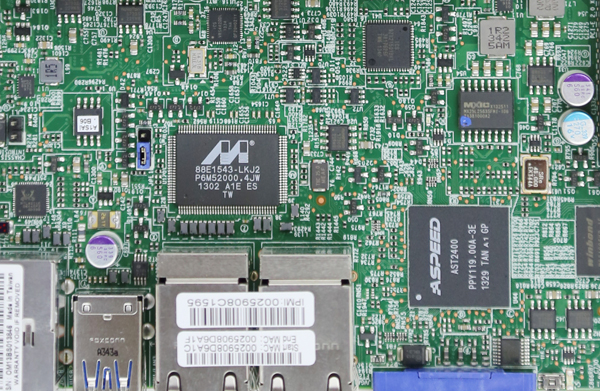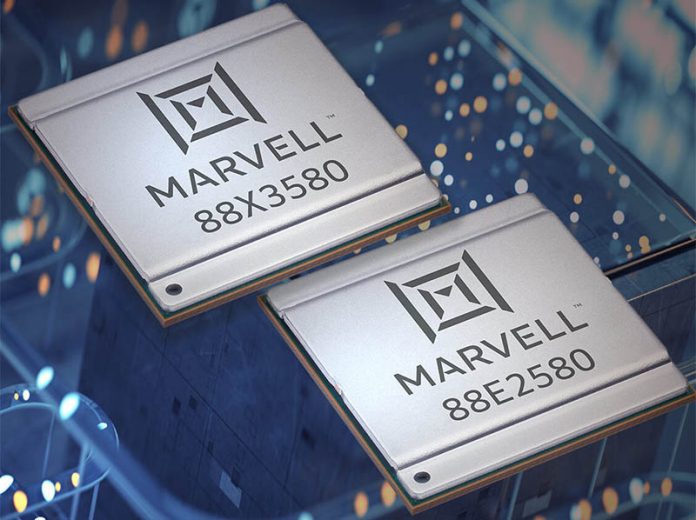Infrastructure is finally moving to multi-gig Ethernet. After years where most edge nodes were connected at 1GbE speeds, we are finally seeing the technology and the push to move into a 2.5GbE/ 5GbE/ 10GbE era in client devices, access points, and the switches that support them. We previously covered the Marvell 2020 networking portfolio update and we are clearly seeing a generational change in the industry. The new Alaska Octal Scalable mGig PHY is the next step.
New Marvell Octal mGig Solutions
The two main variants Marvell is announcing. One is the Marvell Octal mGig-10G 88X3580 which is a 10G PHY transceiver. The other is the Octal mGig-5G 88E2580 which is a 2.5/5G PHY transceiver. Both are manufactured in 12nm FinFET. Those that follow the latest CPU trends will note this not the newest process, but often for I/O slightly older generations of process technology are used. For example, the AMD EPYC 7002 series uses 7nm for its x86 compute dies but uses 14/12nm Global Foundries for its I/O die. Even moving to 12nm means these Octal mGig solutions offer 10% lower power consumption than their predecessors.
For those wondering where we have seen Marvell Alaska PHYs previously on STH, this is a great example from our Supermicro A1SAi-2550F Review. There the Intel Atom C2550’s quad 1GbE ports were connected to the Marvell PHY to provide quad Intel NICs.

While we often focus on the NIC side of the equation, the PHYs can use a lot of power, especially with 10Gbase-T. Adding 2.5GbE and 5GbE support helps us get faster networking at the edge. Good PHYs can also be more forgiving on cable lengths than IEEE standards which is a feature Marvell touts for these new mGig PHYs.
Final Words
On one hand, the new PHYs are extremely exciting. We need PHYs and NICs to offer cooler, lower power operation, and at a lower cost so that we can finally see 1GbE displaced. With WiFi 6 offering potentially better than wired 1GbE speeds, companies like Marvell need wired Ethernet to be significantly better in order to stay relevant in a broad market. The new Alaska mGig PHY solutions are a step in the right direction. We now need the rest of the NIC, SoC, and switch ecosystem to catch up.
Also, Marvell desperately needs a new name for this product. This is a 17 x 17 mm package that was introduced to STH as the “Marvell Alaska Octal Scalable mGig PHY”. Including spaces, that name has more than adding the mm dimensions of package size (17+17=34.)





17×17 is 289 sq mm. The name is certainly shorter than 289 characters : )
As much as I want 10Gbps Ethernet, 5Gbps is good enough. There are companies out there only doing 2.5Gbps which isn’t enough for headroom. I think 5Gbps hit the sweet spot, in terms of CAT cable, and speed support.
Just wondering on the pricing compared to 1Gbps and TDP. Over the years 10Gbps is not only expensive but also uses lots of energy and therefore lots of heat. We want something that is small and can be passively cooled.
The TDP question as mentioned above is a big question mark for me as well, as the world moves to faster interconnects.
I’d love to see an article focused on idle and active performance (Idle and active watts per Gbps). That might uncover some interesting surprises not only among ethernet, but versus other supposedly more efficient interconnects like SFP.
Call it an octalmig